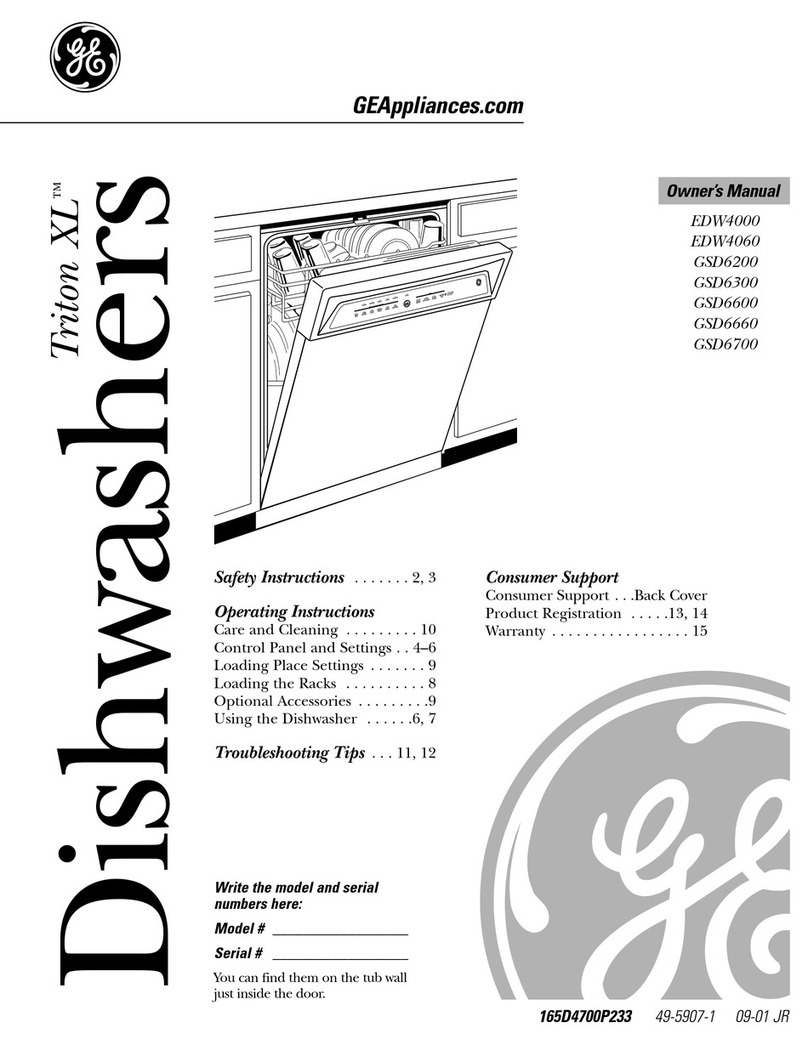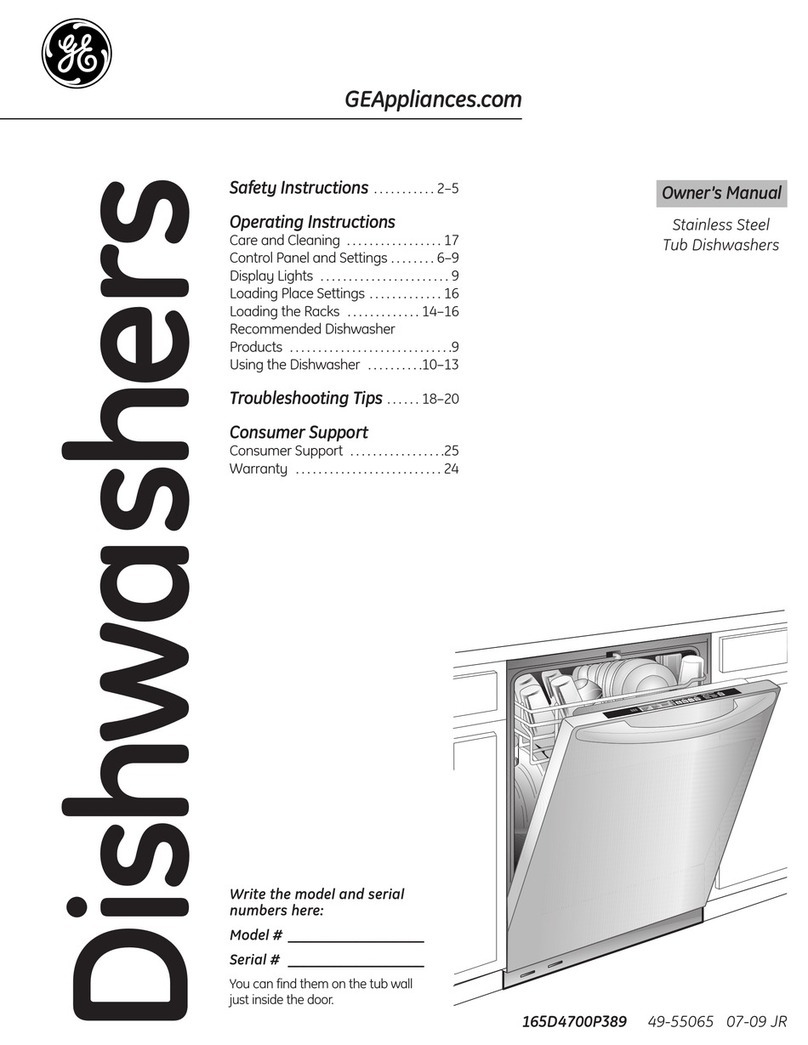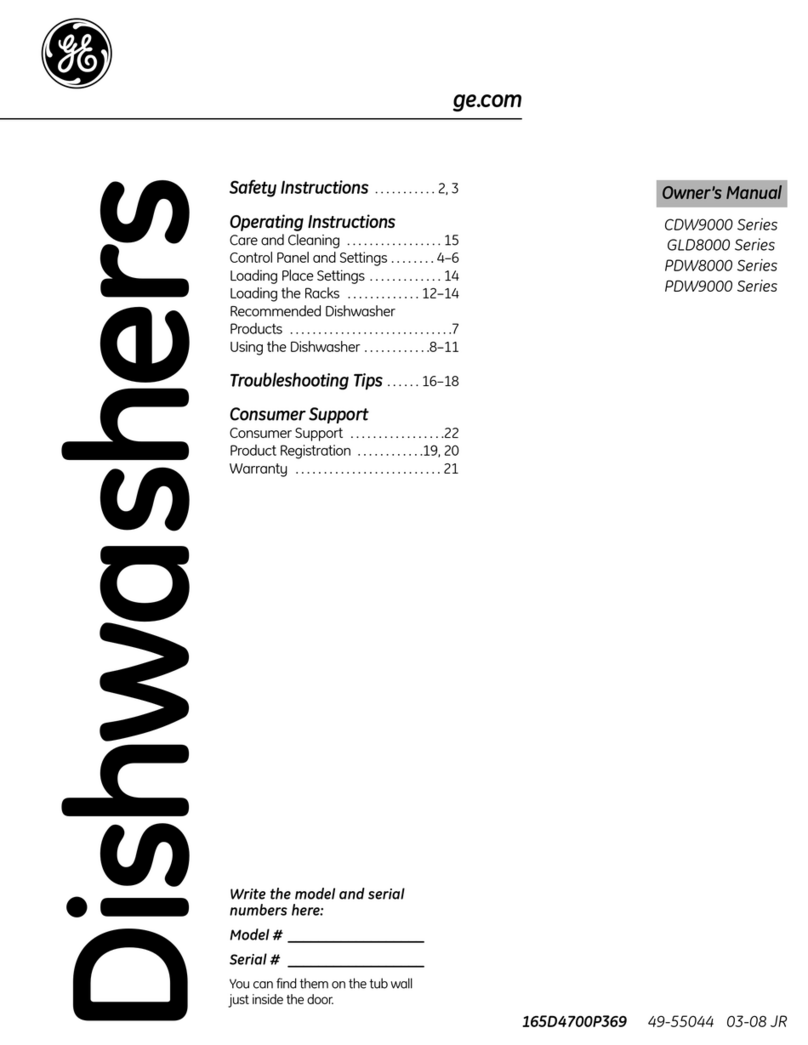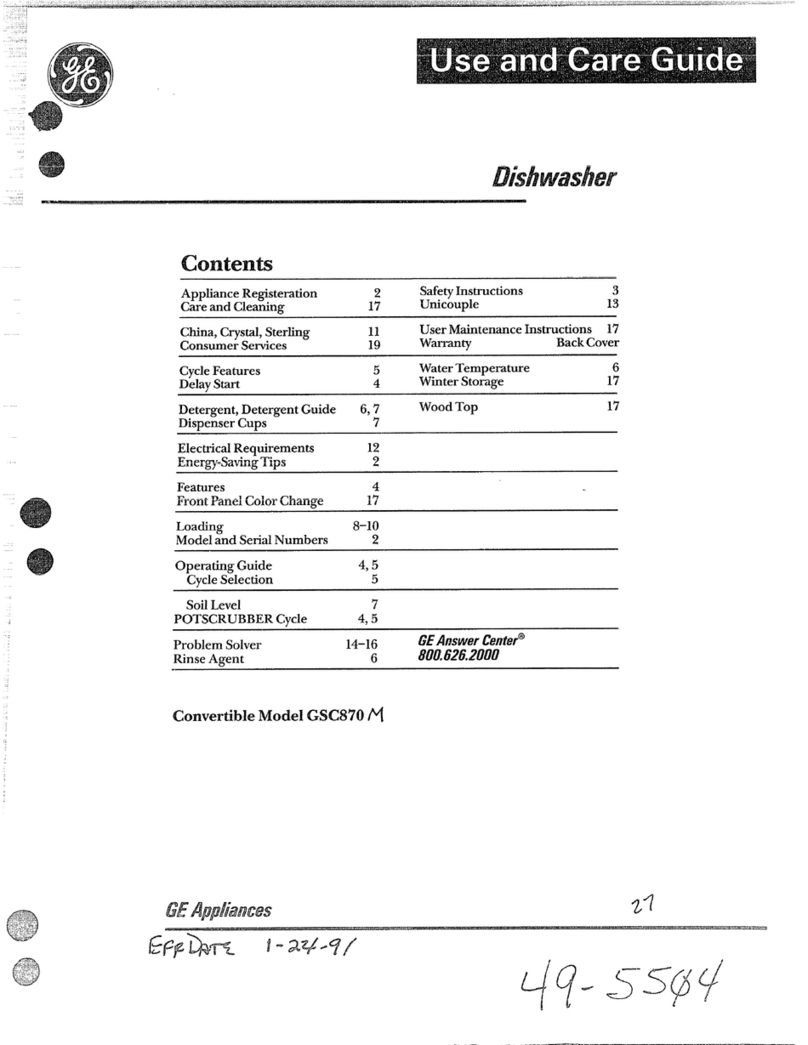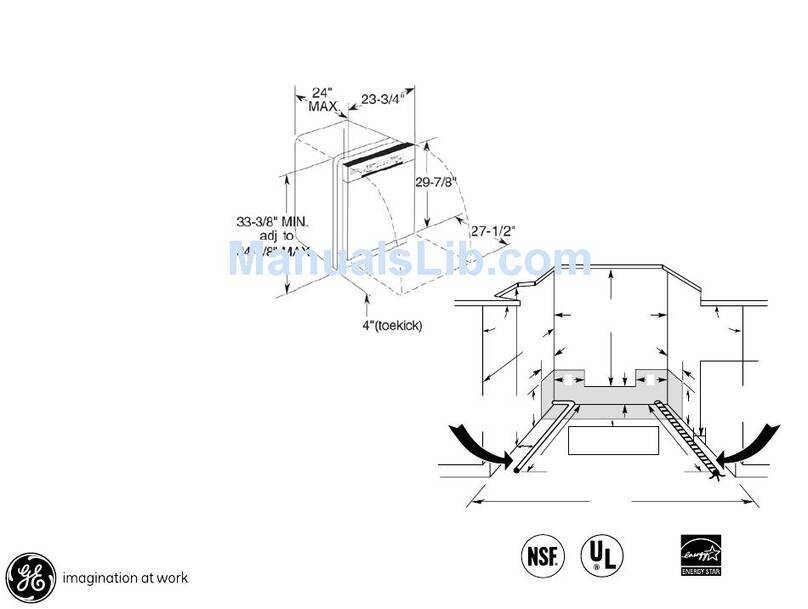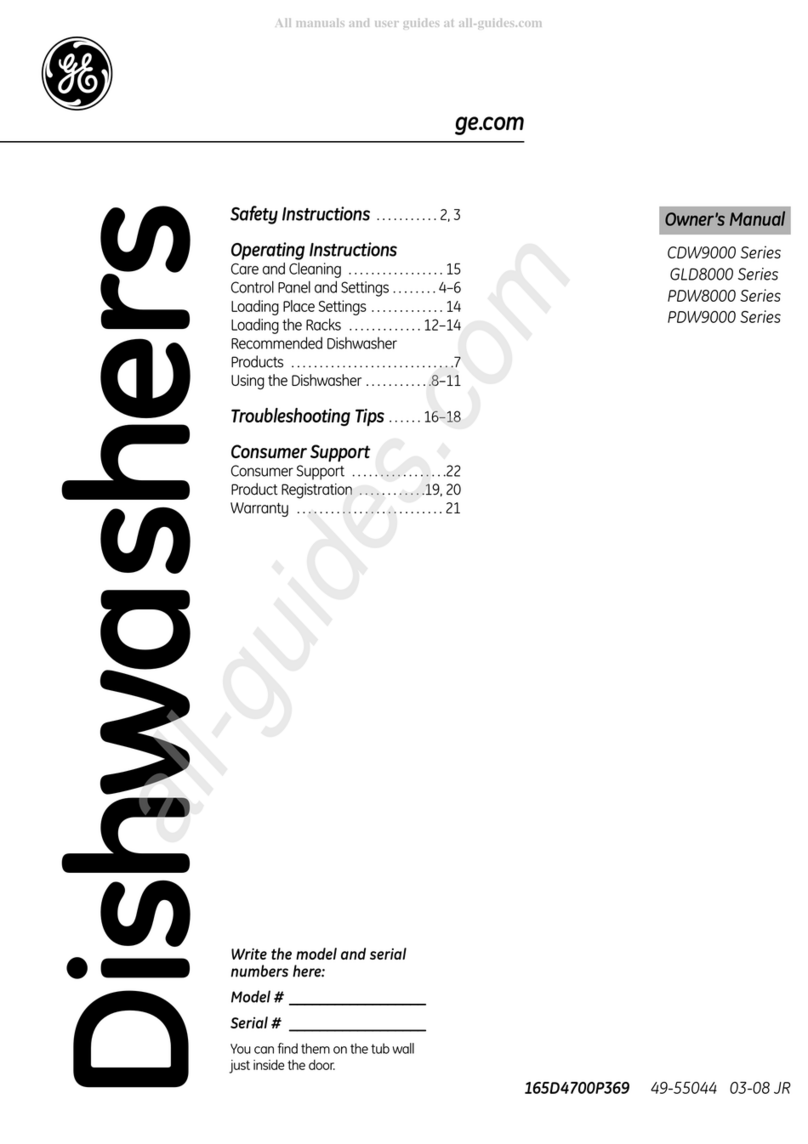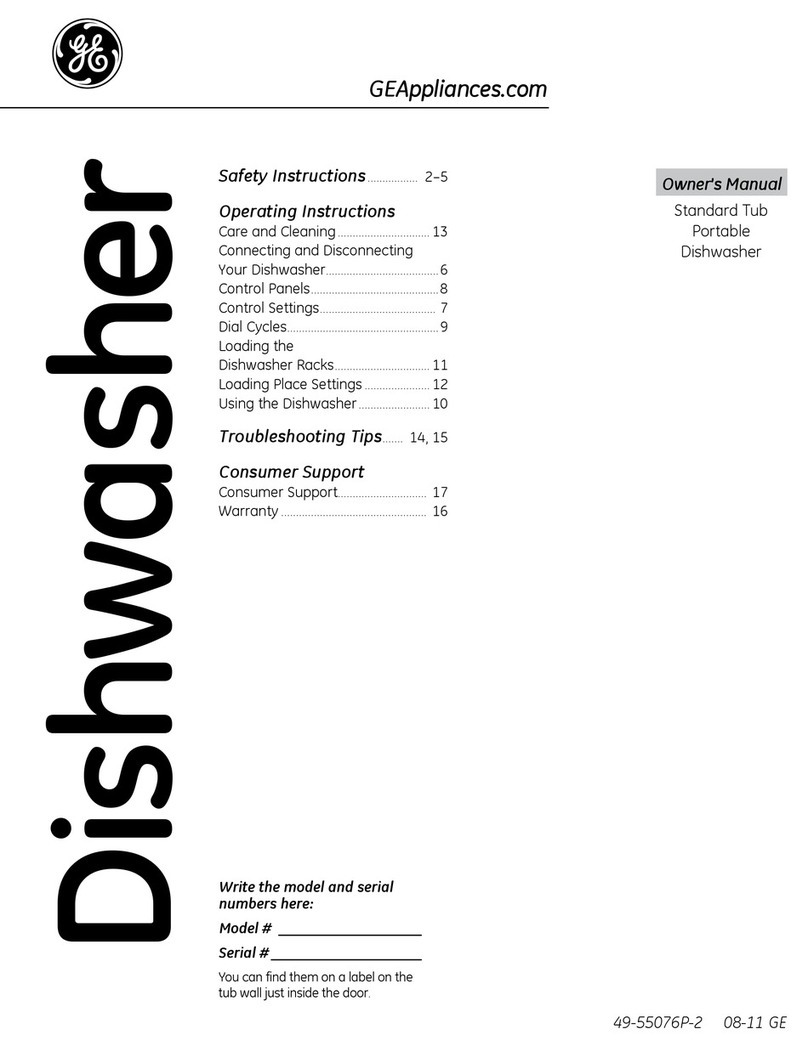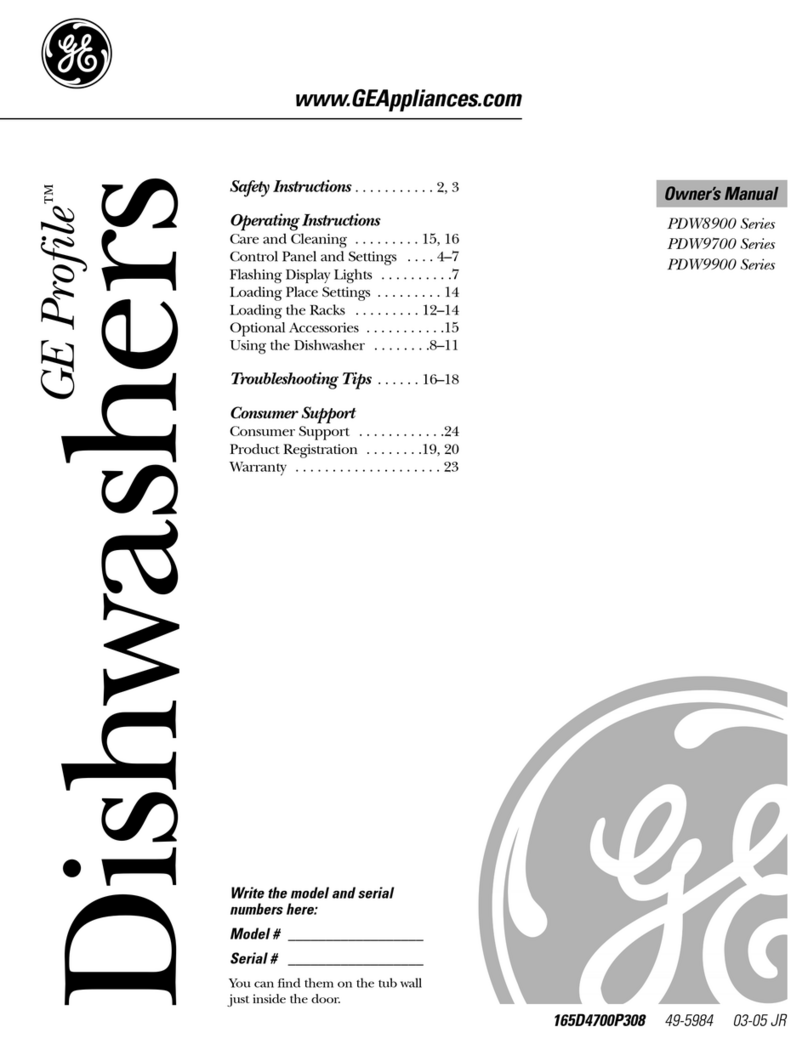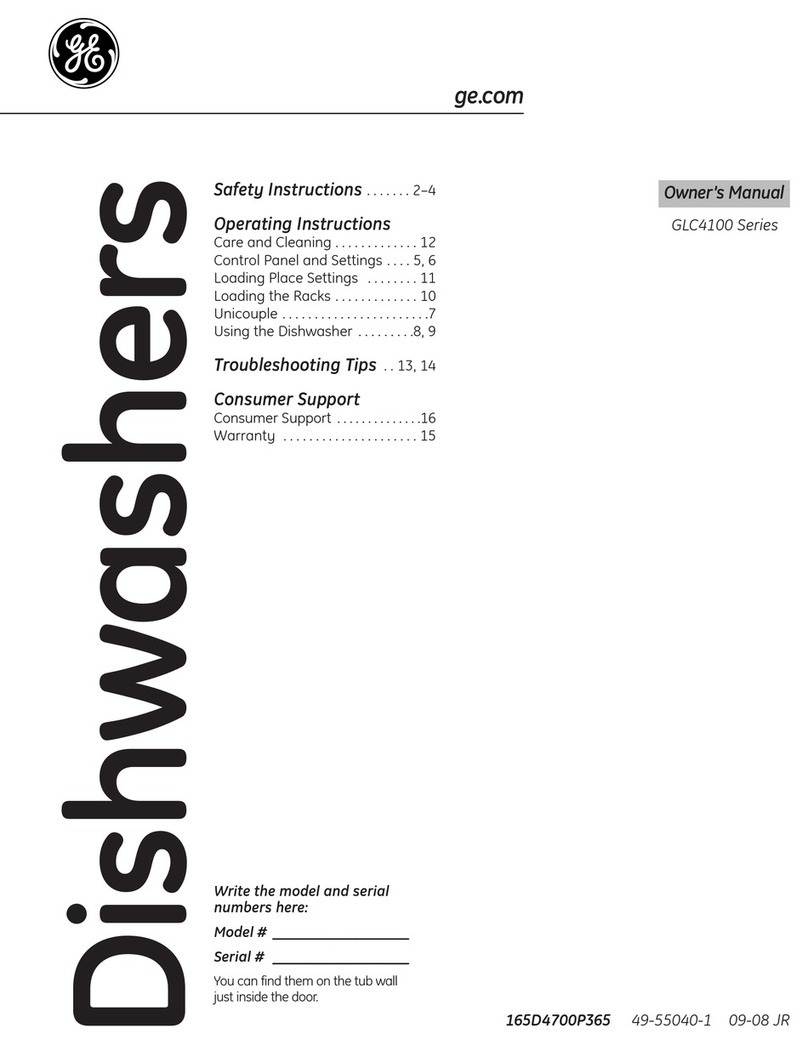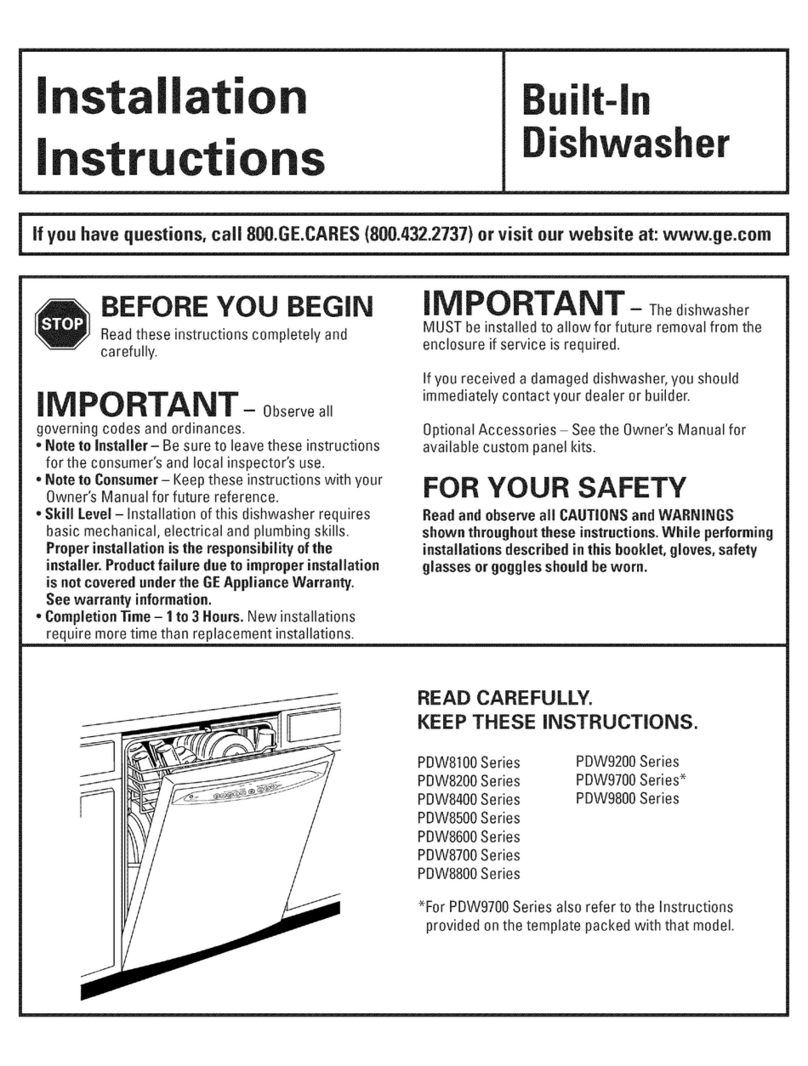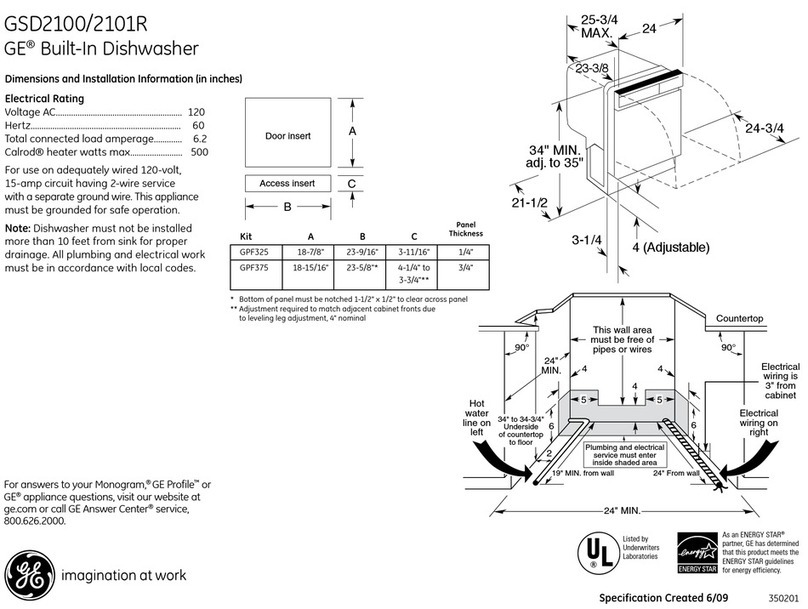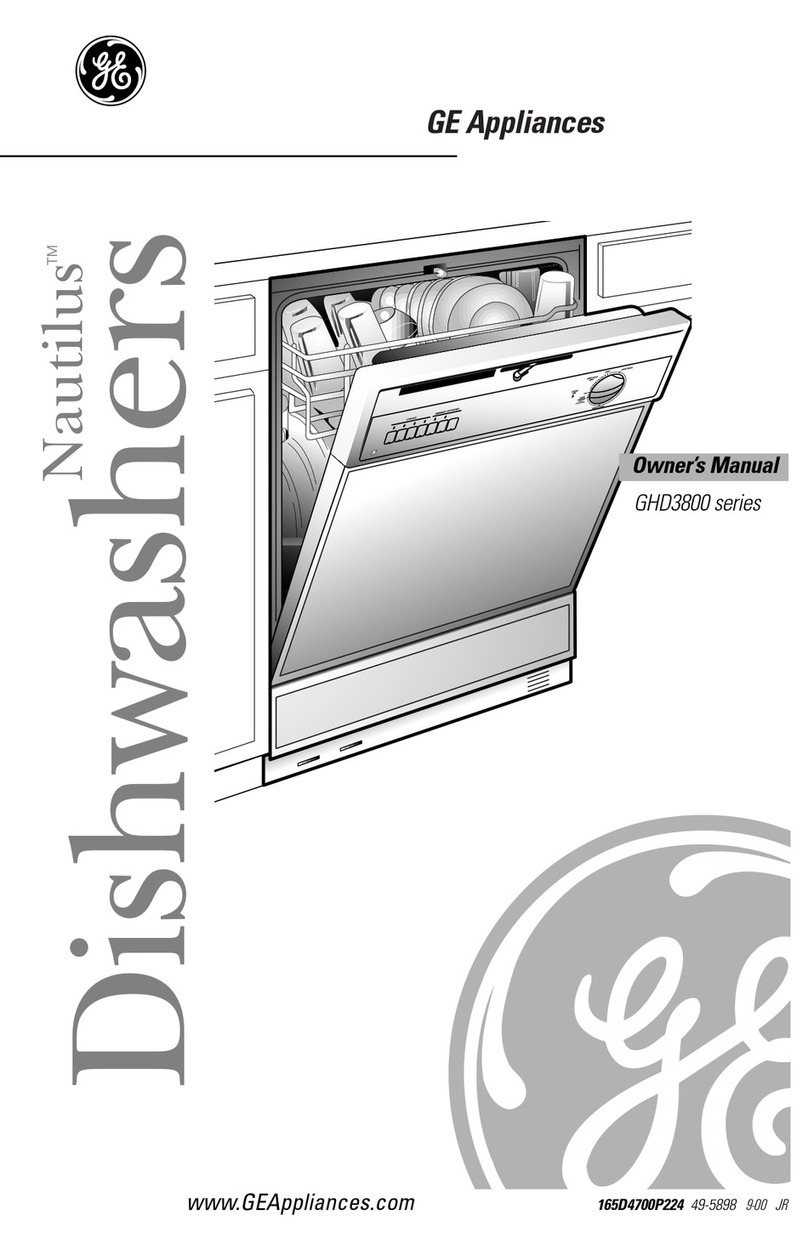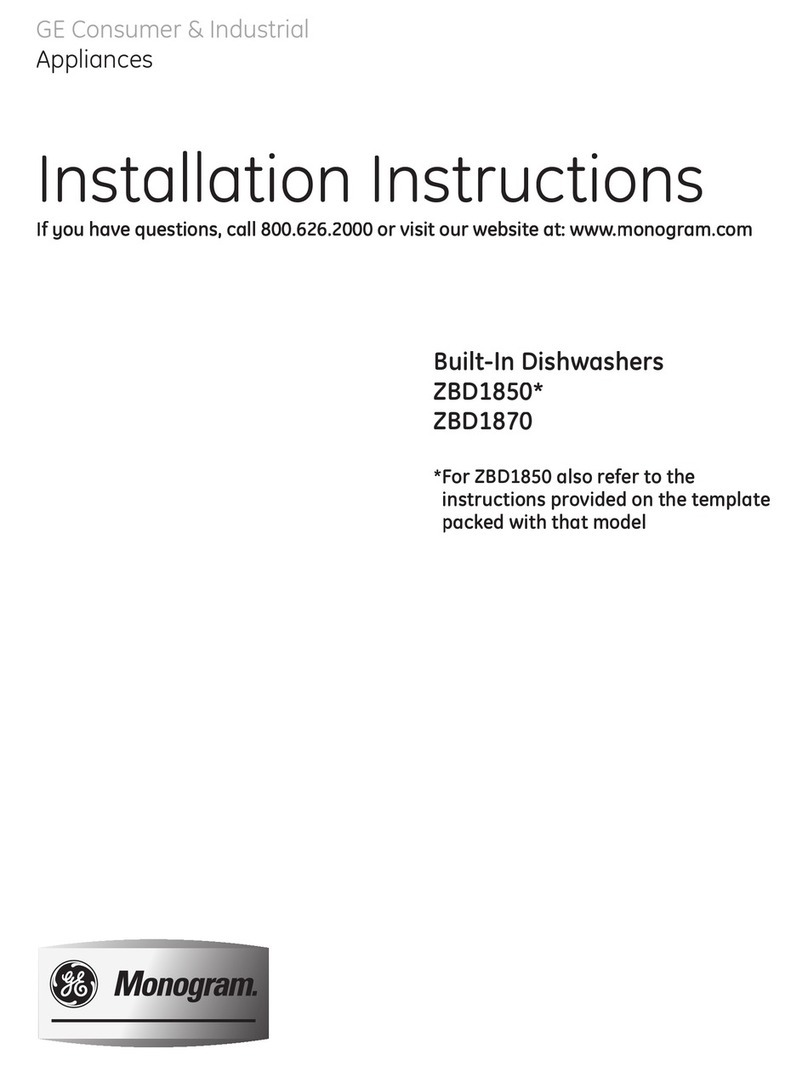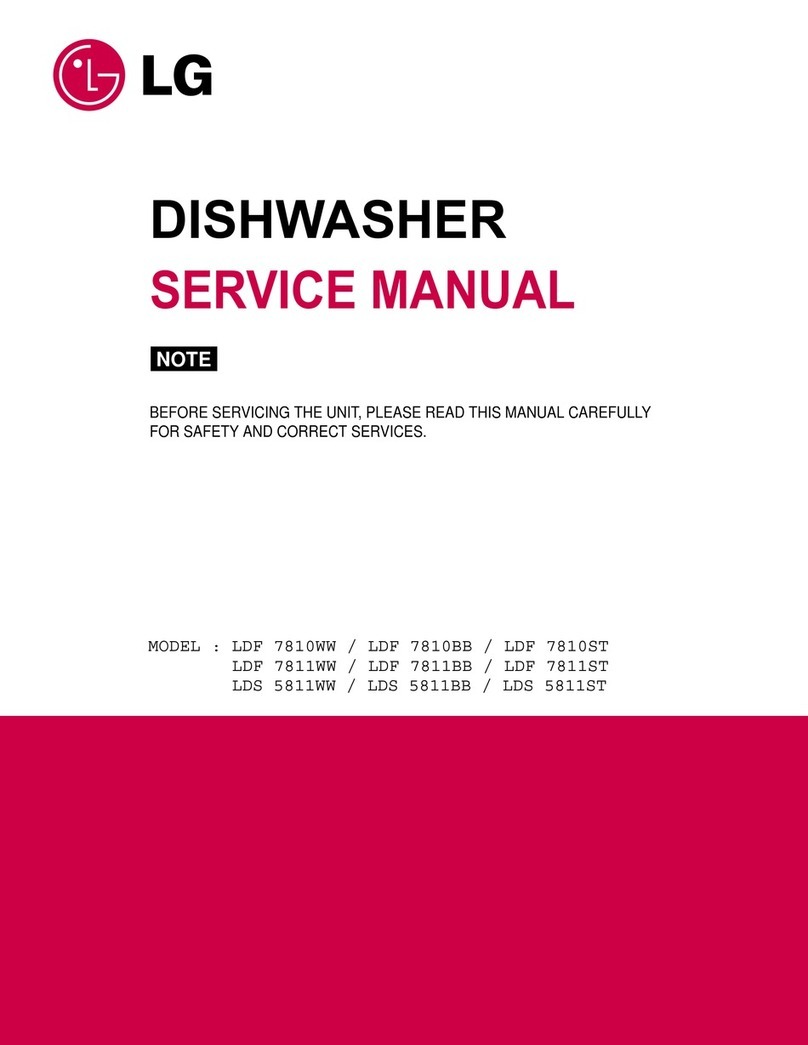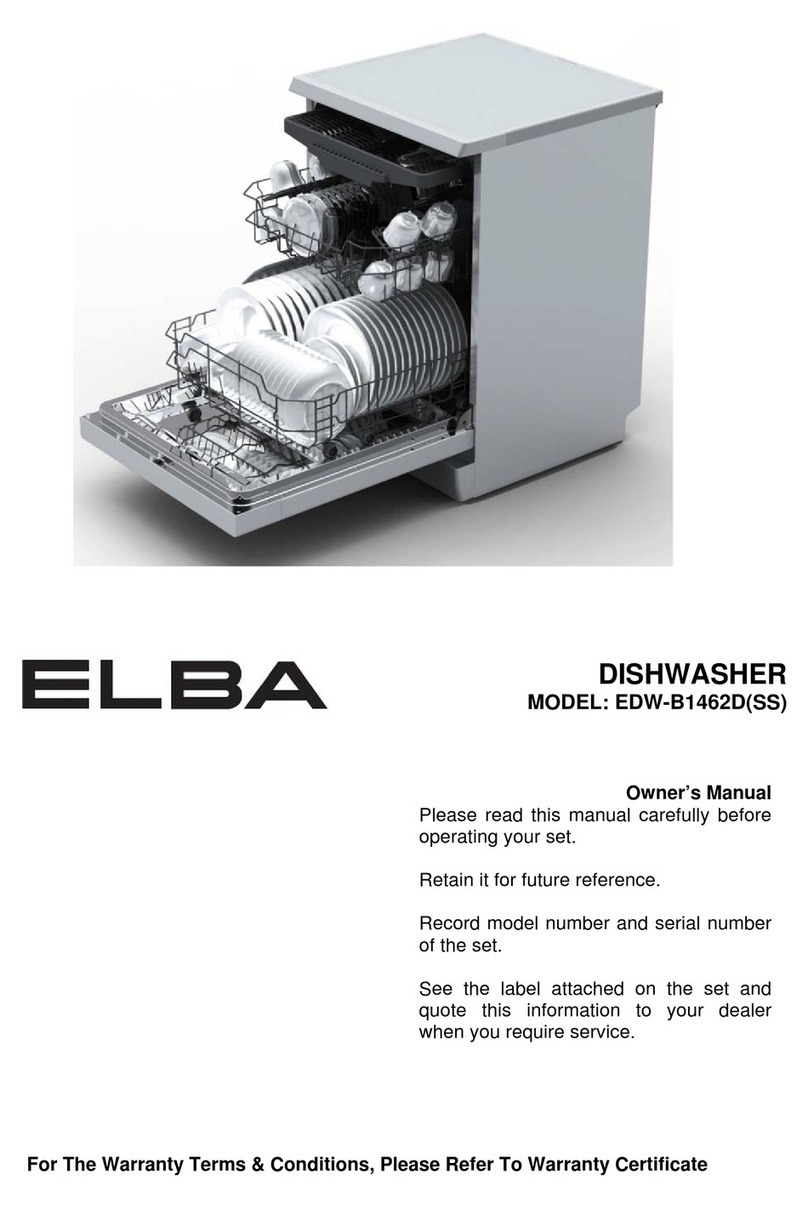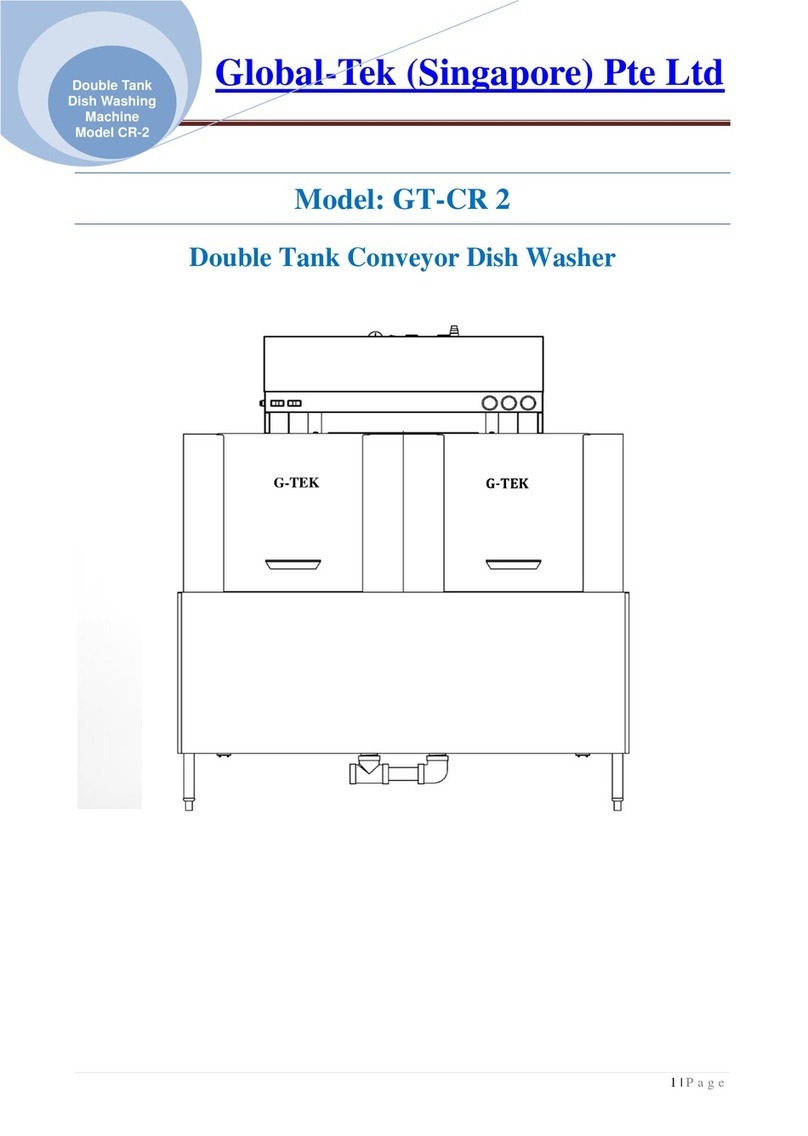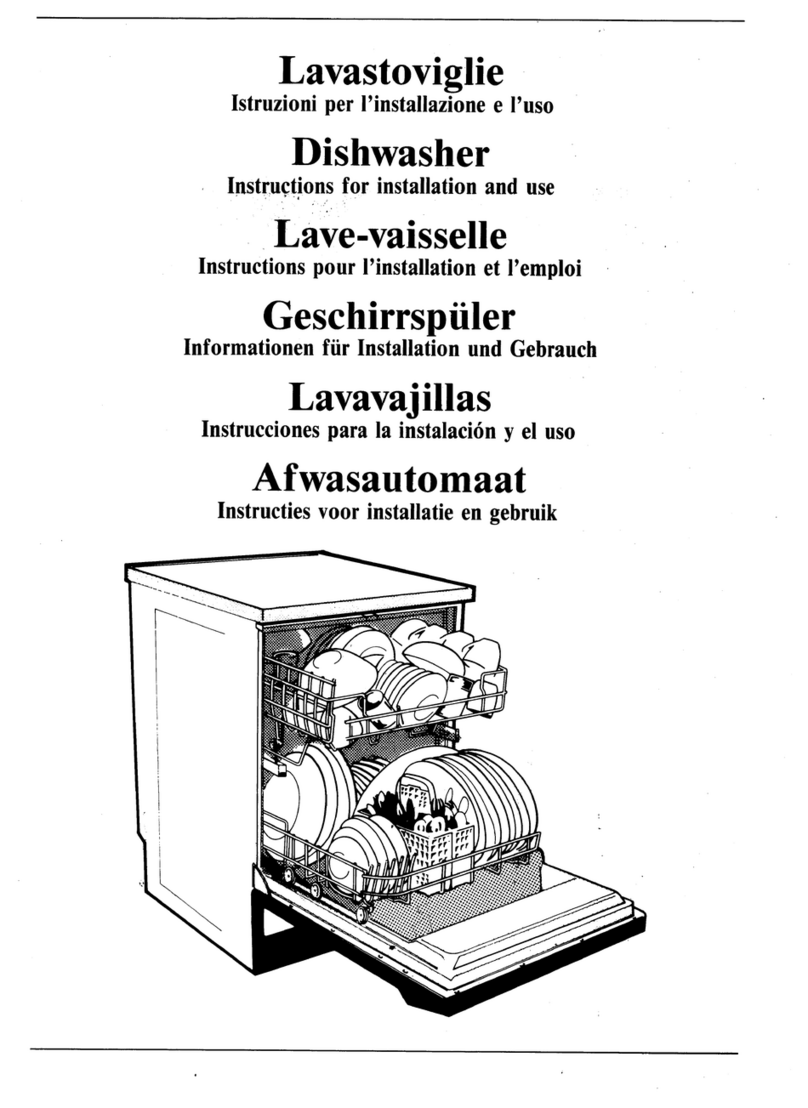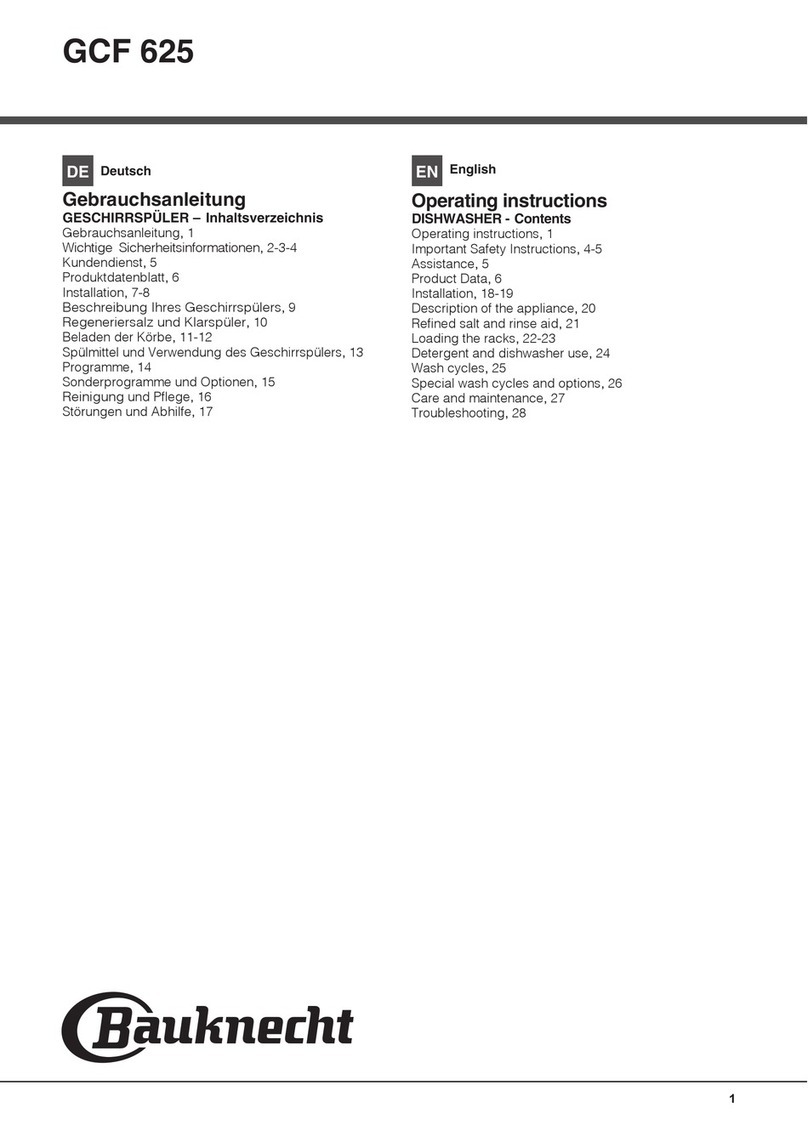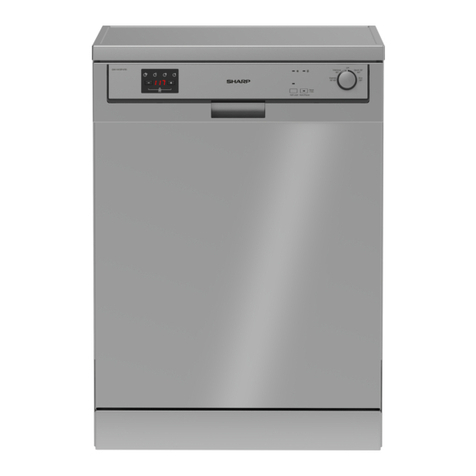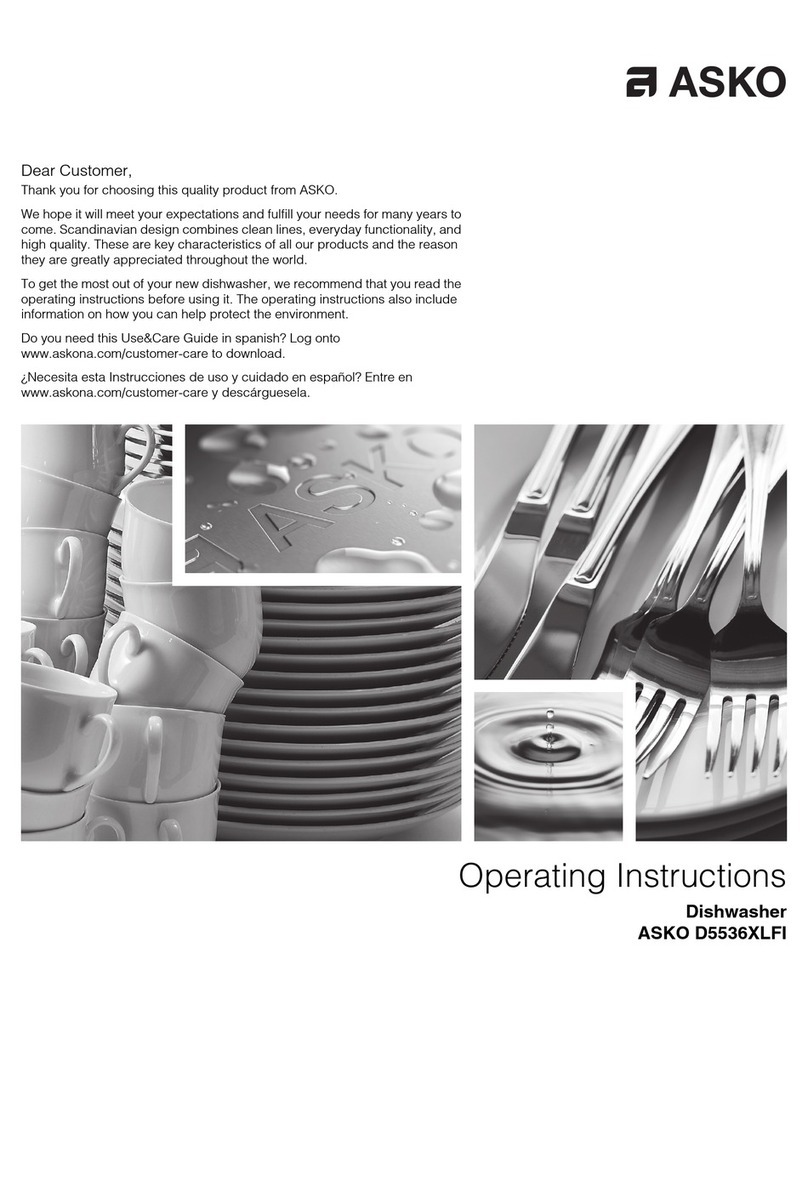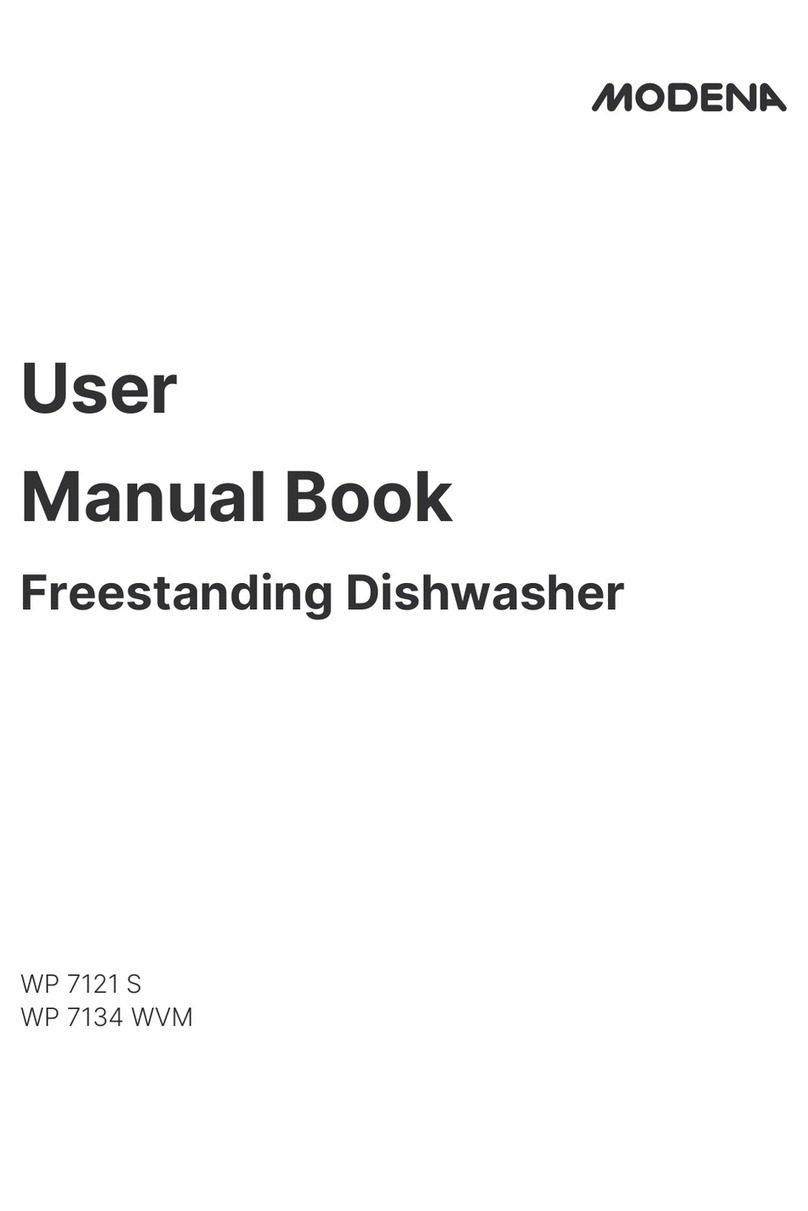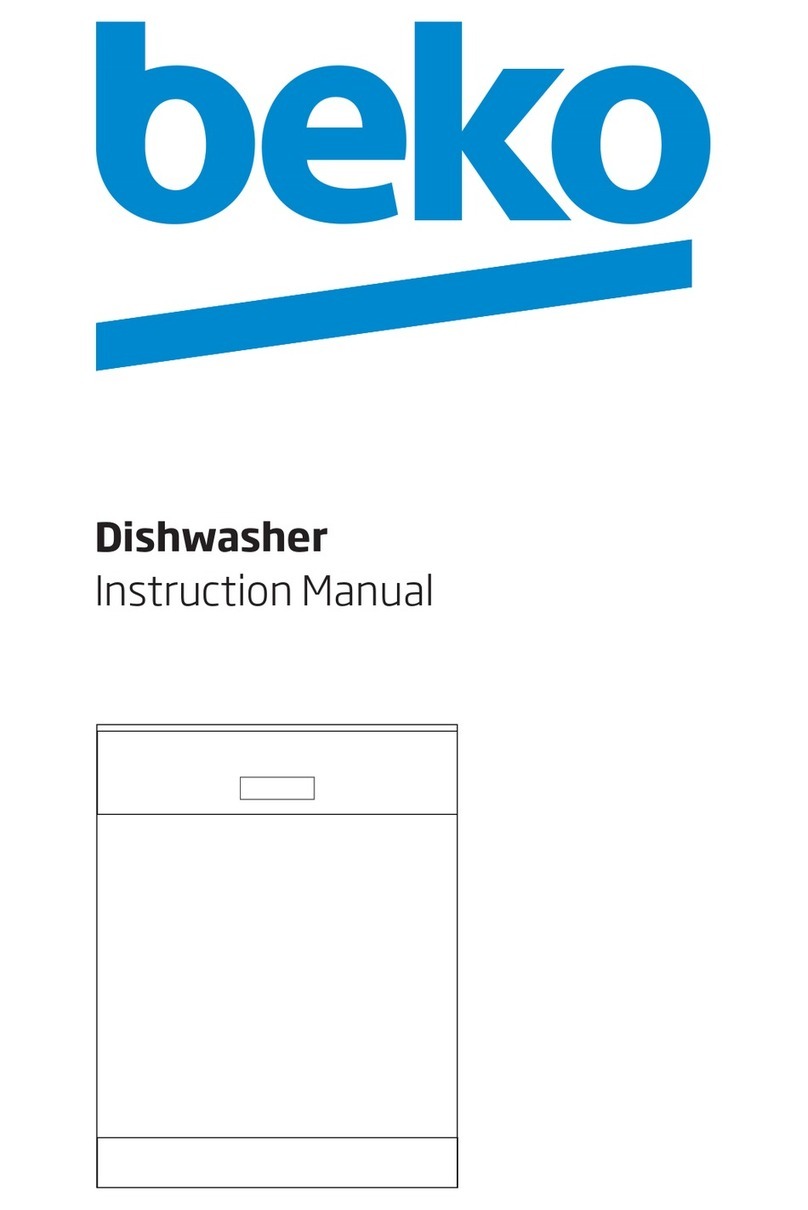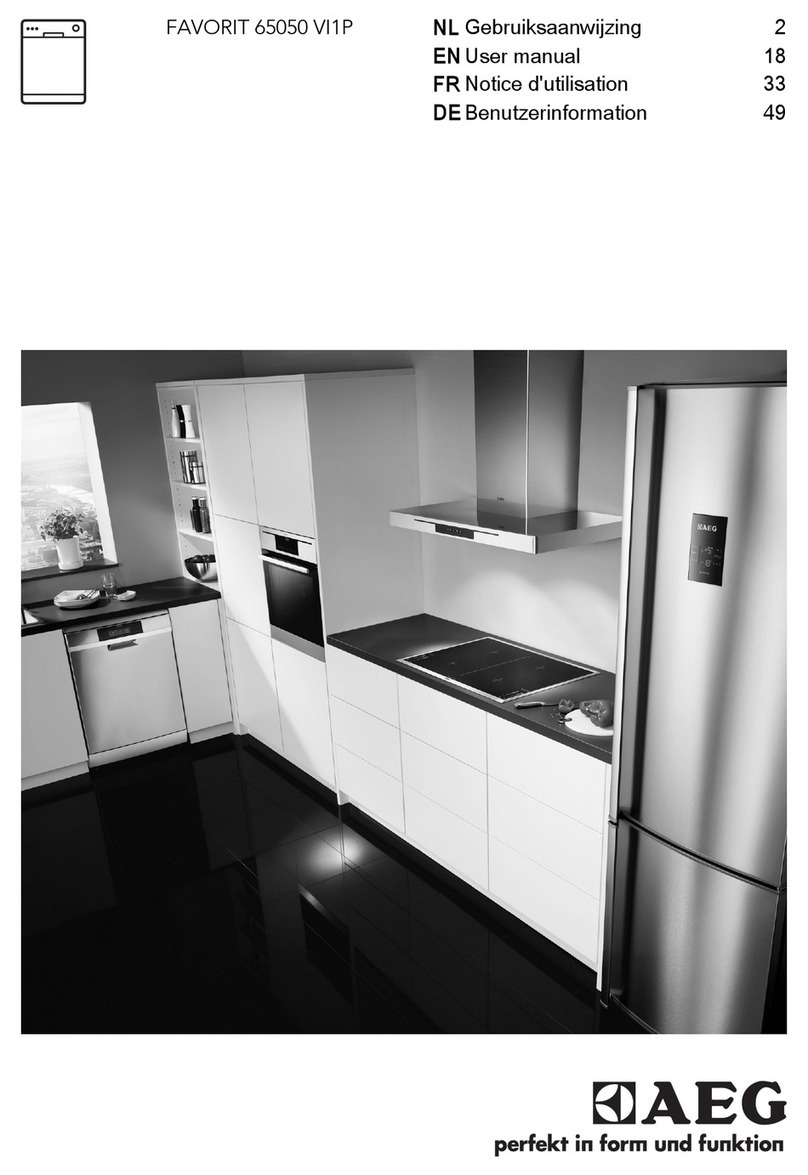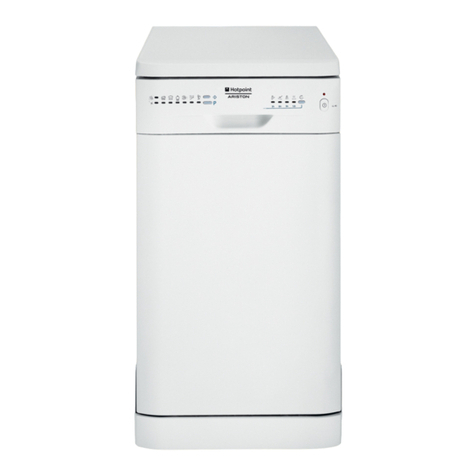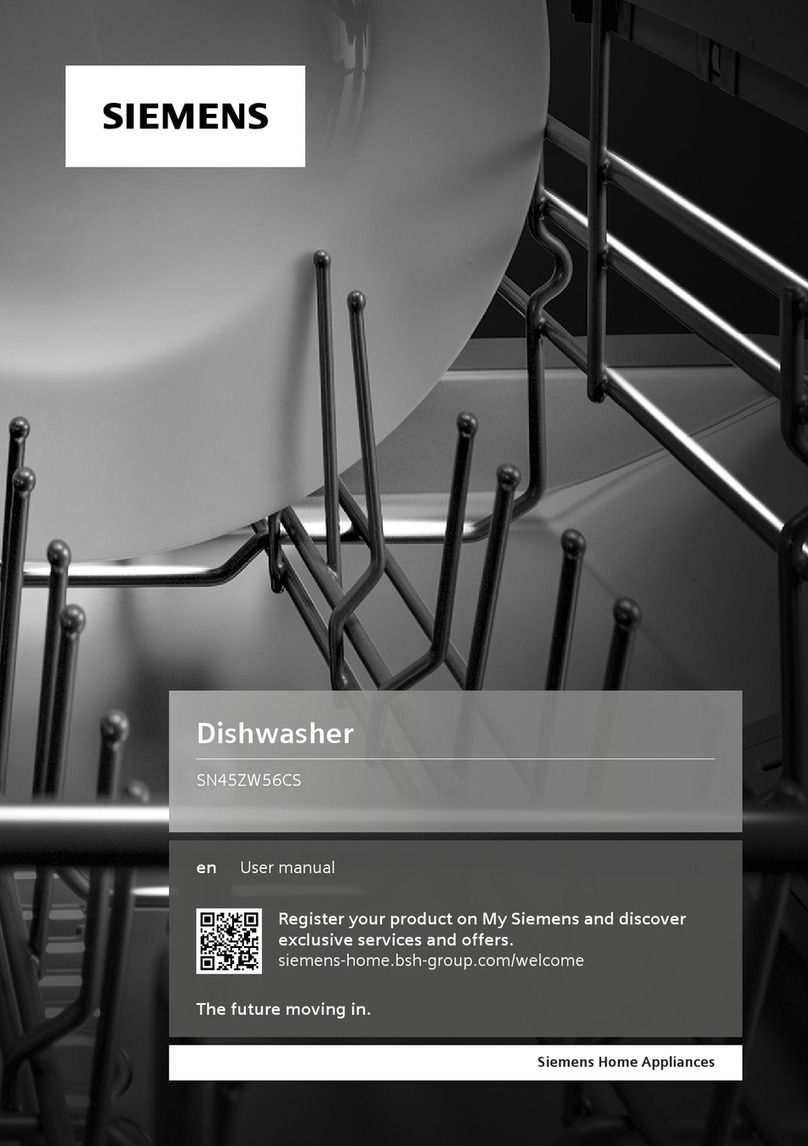
GWMl!dishwashingstarts
with HOT’water,
Toget dishesclean and dry,you
ileedhoi water.Tohelpyouget
waterof thepropertemperature,
yourdishwasherautomatically
heatsthe waterin the washcycle.
Forgood washingand drying,the
enteringwatermustbe atleast
120°ETopreventdishdamage,
inletwater shouldnotexceed 150”F.
How totest water temperature:
Check the water temperature
insideyour dishwasherwith a
candy or meat thermometer.
Let the dishwasherrun through
one fill and pump out cycle, then
let the dishwasherfill with water
the second time.
When you hear the water stop
filling, unlatch the door and slowly
open it.
Measure the temperature of the
water in the bottom of thetub this
way:
Remove the silverware basket and
place acandy or meat thermometer
in the water towards the middle of
the tub. If the temperature is less
than 120”F,you will not get good
washing results. Higher water
temperature is needed to dissolve
grease and activate powder
detergents.
Helpful hints: Ifoutside
temperaturesareunusuallylow,or
ifyourwatertravelsalongdistance
fromwaterheatertodishwasher,
youmay needto setyourwater
heater’sthermostatup.Ifyouhave
notusedhotwaterforsometime,
thewaterin thepipeswillbecold.
Turnon thehotwaterfaucetat the
sinkandallowit torununtilthe
waterishot.Thenstartthe
dishwasher.If you’verecently
donelaundryor runhotwaterfor
showers,giveyourwaterheater
time torecoverbeforeoperating
thedishwasher.
To improvewashabilityif the
water is less than 120”Fand you
cannot adjustyour waterheater:
Select alongercycle and fill both
detergentcups at leasthalf-full
with detergent.
HOW ~0 usearinseagent.
Arinse agentmakes water flow
off dishesquicker thanusual. This
lessens water spottingand makes
drying faster, too.
For best dishwashingperformance,
use of arinse agent such as JET-
DRY brand is recommended.
Rinse agents come in either liquid
or solid form. Yourdishwasher’s
dispenser uses the liquid form.
How to fill the rinse agent
dispenser. Unscrew the cap. Add
the liquid rinse agent until itjust
reaches the bottom of the lip inside
the dispenser opening.Replace the
cap. The dispenser automatically
releases the rinse agent into the
final rinse water.
If you accidentally spill:Wipe
up the rinse agent with adamp
cloth. Don’t leave the spillin the
dishwasher. It can keep your
detergent from working.
If you.can’t find any rinse agent,
write:
13ENCKISER CONSUMER
l?RODUCTS, INC.
(“JET-DRY”)
411 W. Putnam Ave.
Greenwich, CT 06830
Yourdishwasher’srinse agent
containerholds4!4ounces,This
shouldlast about3months.Fill as
needed. Do not ove~fill.
How tochow andwe the
rightdetergent.
First, use only powder or liquid
detergent specifically made for
use in dishwashers. (Mm types
will muse oversudsing.
Second, check the phosphate
content. Phosphatehelps prevent
hard-water materialsfrom forming
spotsor film on your dishes. If
your water is hard (7 grains or
more), your detergenthas to work
harder.Detergents with ahigher
phosphate level will probably work
better. If the phosphatecontent is
low (8.7% or less), you’ll have to
use extra detergent with hard water.
Yourwater department can tell
youIhow hard your water is. So
can yourcountyextensionagent
oryourarea’swatersoftener
company.Justcallandaskthem
howmany“grainsofhardness”
arein yourwater.
Howmuch detergent shmdd yml
use? That depends. Is your water
“hard” or “soft”? With hard water,
you need extra detergent to get
dishes clean. With soft water, you
need less detergent.
Too much detergent with soft water
not only wastes money,it can be
harmful. It can cause apermanent
cloudiness of glassware, called
“etching.” An outside layer of
glass is etched away! Of course,
this takes some time. But why take
achance when it’seasy to find out
the hardness of your water?
6
